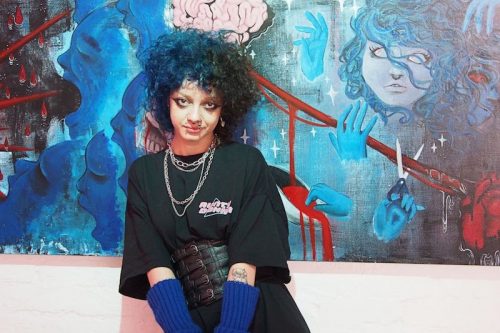By Roberto Chuter
Dominic Kurian’s Neighbours Cafe, corner of Inkerman and Chapel Streets, East St. Kilda is becoming somewhat of a local cultural venue of late. Every month or so a new artist can adore the walls of this popular cafe with their works. This month it’s the unique solo work of artist/drone photographer Eamon Wyss whose passion for abstract visual storytelling is extraordinary and infectious. At the busy exhibition opening, with a vino in one hand and an arancini ball in the other, I managed to ask Eamon some probing questions:
What did you do before you became an artist?
After high school, I deferred my university education and traveled around the world for eight years. During this time, I discovered a doorway into the global techno underground and spent the 90’s searching for the most radical dance parties I could find—from secluded beaches in Thailand to the Himalayas in India to free traveler gatherings in England.

How did you become an artist?
While traveling throughout the techno world, I loved the way the techno community created interactive spaces around art, music, and culture. So, I returned to Melbourne, met a bunch of amazingly creative people, and we started creating electronic art, music festivals, and events. From this, I learned to paint artworks, make installation art, DJ and produce electronic music, as well as learnt to design and run interactive festivals and events. Over time, I honed my creative skills in the form of fine art photography
Why do you do the work that you do, Jungle?
I love pushing creative and cultural boundaries. I like to think of myself as a bit of a culture hacker, influenced by the neo-tribal and participatory culture of the techno movement.
Which people or what inspires you to work in the arts?
The underlying inspiration for my work is the landscape. I have always had an innate connection to the land. It is the platform or framework on which we build our lives and communities. This is true not only for my latest artwork as a fine art landscape photographer but also in designing festivals and events—the land itself determines the kind of events I design and build. More specifically, the main inspiration for my recent work in fine art drone photography comes from the Aboriginal dot paintings I encountered in the Australian desert as a boy, which use both topographical and symbolic communication of the landscape to tell a story.
How did your drone art eventuate?
For years, I enjoyed flying over the Australian deserts via Google Maps, exploring the shapes and colours apparent in the landscape. However, the software is limited in how close you can get to the earth. I felt that I wanted to zoom down closer to the ground and take photos of the landscape we walk on in our everyday lives. At first, I borrowed a friend’s drone to test this idea before spending thousands of dollars on my own equipment. I planned to head out to the deserts of NSW but felt that it was simply too far from me to test an idea. So, I decided on the open dry pans of Lake Corangamite west of Geelong.
Unfortunately, the day was grey and overcast, and the lake looked like horrible grey mud. Unfazed, I practiced flying the drone, loved it, and took a few photos of the mud. I used an iPhone as my interface, so I wasn’t sure what I was looking at. Later, at home, I opened my files and was completely blown away. I could not believe the number of extraordinary colours that lay hidden in the mud, as seen from the perspective of a drone.
I then researched Lake Corangamite and discovered it was a salt lake and that there were other salt lakes in the area. That was it. I bought a drone and went off salt-lake hunting across Victoria. So far, I have found scores of multi-coloured salt lakes with hues ranging from orange, blue, red, pink, and purple.
What do you think have been some of the negatives and positives in your work, do you think?
Positives: Coming to realise that my creative skills have a shared theme across each discipline I engage in. In other words, I found my voice. Negatives: Short battery life :). I could spend days up there flying around with my drone over these exquisite salt lakes, seeking out what I describe as contemporary dreaming stories that lay hidden in the landscape. Unfortunately, drone batteries only last 20 minutes and they are very expensive.
What have been your favourite achievements up to this point?
As an interactive festival art director and producer, I designed and co-produced what I believe to be the world’s first fully distributed, fully interactive arts/music festival as a platform. As organisers, we intentionally designed ourselves completely out of the way, so the entire event ran all by itself without any central governing body at all. And it worked—a social experiment in self-management to determine if a thousand people could coexist freely and cooperatively together for five days without the need for centralised control. Experiments like this give me hope in humanity. More recently, however, my favourite achievement has been my successful first solo exhibition of fine art drone photography this year at Burrinja Cultural Centre in Upwey.

How did you get your nickname, ‘Jungle’?
When I first left home to travel, I was a mad Doors fan and loved Jim Morrison. I had boofy hair and was into the whole poetry thing. When I first started traveling, these crazy travelers started calling me Jim—mocking me in a fun way, of course. And I used to love jumping off high cliffs and tall trees down into water holes in the rainforests near Cairns. So, people started calling me ‘Jungle Jim’. Over time, this was shortened to simply ‘Jungle’. Then, one day, I realised that everyone knew me as ‘Jungle’.
What are you currently working on?
I currently have a solo exhibition of fine art drone photography called ‘Dreamscapes’ at the Neighbours Cafe Gallery in St Kilda. It is a series of unmanipulated drone photographs of ephemeral salt lakes in Victoria, purposely composed from the air to emulate abstract paintings. The exhibition runs from 30th September – 5th November.
If you couldn’t do this anymore, what career path do you think you would have followed, Jungle?
Filmmaking.
Tell us a funny story or joke that involves your work or life.
When I left Melbourne to travel, I honestly told myself that I wanted to find the best place in
the world to live. Like Santiago in Paulo Coelho’s ‘The Alchemist’, I eventually returned full
circle back to my hometown (Melbourne) and said to myself: ‘Ah, this is it’.



